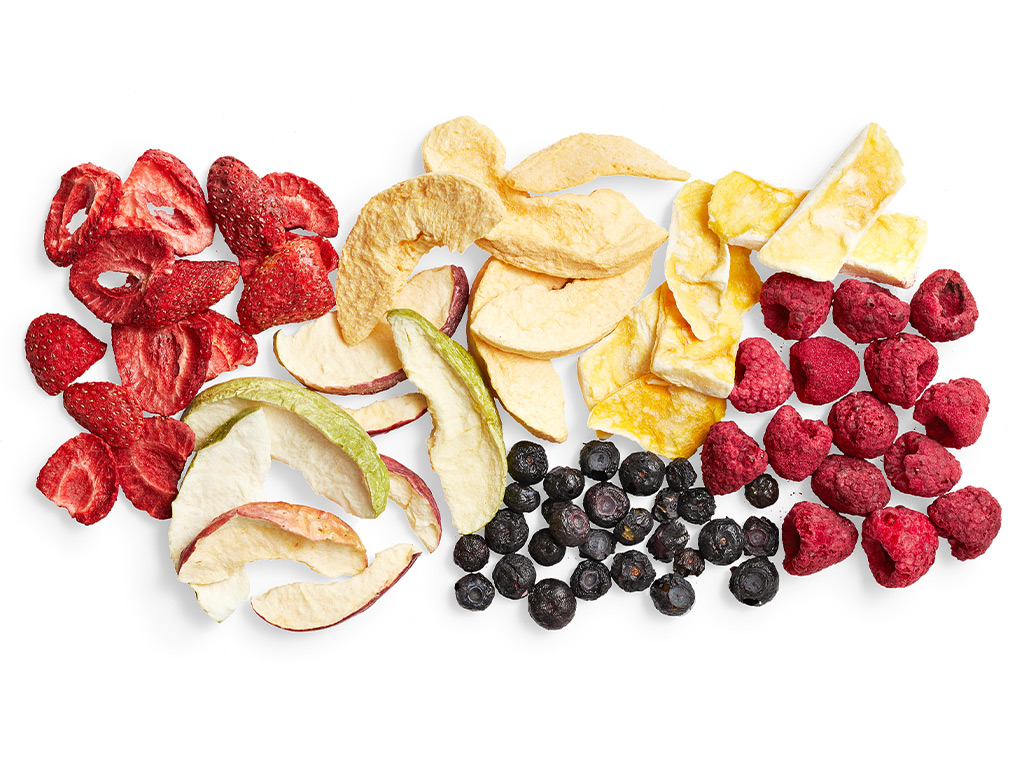

Turn over fruit every 2 hours to speed drying. Leave the oven door open 2 to 4 inches to allow moisture to escape. Keep temperature at 140 to 150 degrees F. Place a candy or deep fat frying thermometer in the oven to check temperature. Put the fruit one layer deep on the cloth. Place a clean, thin cloth on each rack, leaving 1 to 11⁄2 inches uncovered on all four sides to allow for circulation of heat. To dry fruits in the oven, first remove oven racks. These ideal conditions are often not available when fruit ripens. A humidity below 60 percent is best for sun drying. The high humidity in the south is also a problem. Because the weather is uncontrollable, sun drying can be risky. Using this method does slow down the drying process and could take several days to complete. Sunny, hot, breezy days with a minimum temperature of 86 degrees F are preferred. There are certain weather conditions to consider when choosing this method. This makes it safer to dry them in the sun. For more information, contact your county Extension office. If this method is used, food should be dried outdoors for safety reasons. Although sulfites have been used in the past to prevent oxidation, details on this method have been excluded because sulfites found in the food after treatment have been found to cause asthmatic reactions in some individuals. Put it into the boiler, above the water, and cover with a tight-fitting lid. Place fruit loosely, not more than 1 inch deep, into the top of the double boiler or a colander or basket. To steam blanch, put 11⁄2 to 2 inches of water in a double boiler or large pot let water come to a boil. Steam blanching does not give a cooked flavor. Water blanching gives fruit a cooked flavor, so it is not generally recommended. Sold under various trade names, these mixtures are not quite as effective, volume for volume, as plain ascorbic acid, but they are readily available and easy to use. These mixtures contain crystalline ascorbic acid and sugar or ascorbic acid, sugar, and citric acid. Soak prepared fruit about 15 to 30 minutes. Mix 1 to 11⁄2 cups of lemon juice to each quart of water. It takes six times as much lemon juice as ascorbic acid to pretreat the fruit. Allow to soak 10 minutes, drain well, and place on drying tray. Cut the peeled fruit directly into the lemon juice solution. For the lemon juice solution, mix equal parts lemon juice and cold water (i.e., 1 cup lemon juice and 1 cup water). Draining is important because excess moisture can increase drying time. Simply cover the fruit with juice, and allow to soak for 3 to 5 minutes.

Each juice adds its own color and flavor to the fruit, so select the best one for your desired preference. Examples include lemon, pineapple, orange, grape, and cranberry juices. Fruit juices high in vitamin C can also be used to reduce browning in pretreatment. Mix 1⁄4 cup of citric acid to each quart of cold water. It takes three times as much citric acid as ascorbic acid for the same amount of fruit. Turn pieces over gently and sprinkle all sides to make sure each is coated thoroughly.Ĭitric Acid Method. Sprinkle it over the fruit as it is peeled, pitted, cored, or sliced. One cup of the solution will treat about 5 quarts of cut fruit. For peaches, apricots, nectarines, and pears, use 11⁄2 teaspoons for each cup of water. For apples, use 1 tablespoon of pure crystalline ascorbic acid for each cup of cold water. Ascorbic acid is used most often with apples, peaches, apricots, nectarines, and pears. Vitamin C tablets must be finely crushed before mixing with water. You can buy pure crystalline ascorbic acid or vitamin C tablets at drugstores, grocery stores, and some natural-food stores. Volume for volume, it is the most effective of the pretreatment solutions. Figs and berries do not need pretreating.įollowing are methods to pretreat fruits:Īscorbic Acid/Vitamin C Method.

Pretreating by the steam blanch method also decreases loss of vitamins A and C and minimizes microbial spoilage and insect infestation. Pretreating preserves color and keeps fruit from darkening. Many fruits, especially apples, peaches, and pears, tend to darken during drying and storage. Peel, core, and cut into rings 1⁄4 inch thick and then steam.

Steam whole first then peel, pit, and slice into rings 1⁄2 inch thick. Peel, core, and cut into rings 1⁄8 to 1⁄4 inch thick, then steam.Ĭut in half or prick whole figs with ice pick.


 0 kommentar(er)
0 kommentar(er)
